Embarking upon the lush landscapes of the Philippines, a remarkable endeavor unfolds Green Mussel Farming. In this comprehensive guide, we delve into the intricate art of cultivating Perna viridis, a species that has transitioned from being a mere obstacle to an esteemed culinary delight.
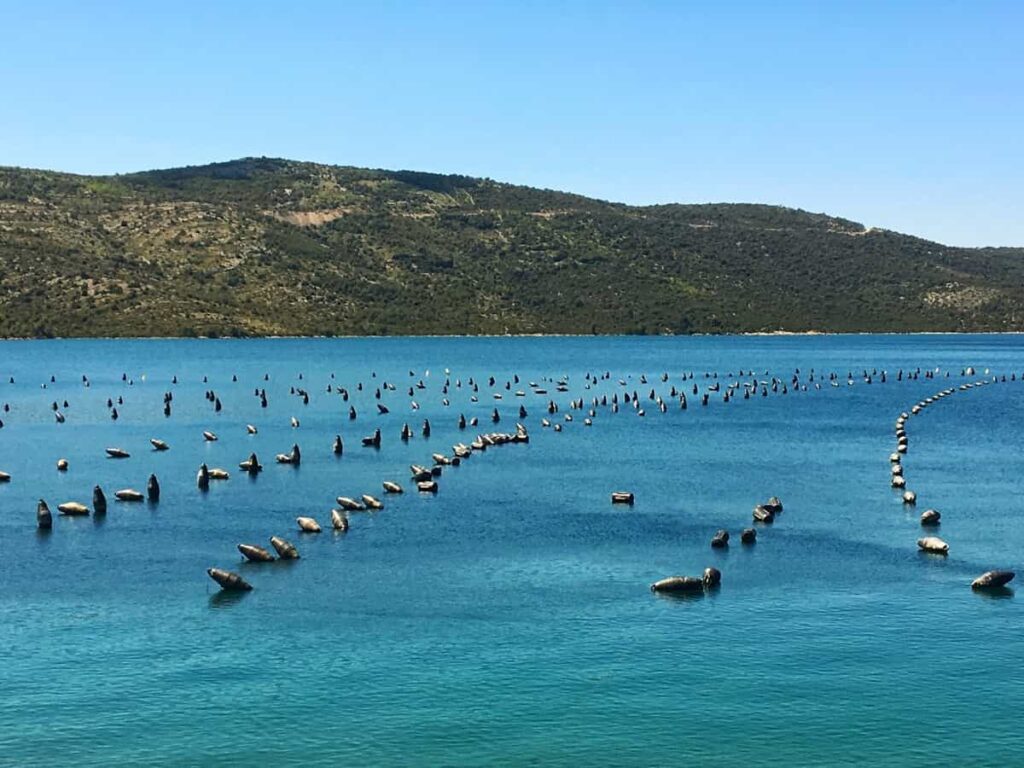
From the iridescent coasts of Ilocos Norte to the mangrove-fringed realms of Mindanao’s Panguil Bay, we explore the geographical tapestry that hosts these mollusks. Unveiling the transformation of green mussels from a rival to a prized resource, we’ll navigate through the techniques and challenges.
Green Mussel Farming in the Philippines: Overview
Perna viridis, previously recognized as Mytilus smaragdinus Chemnitz, 1785, and M. viridis (L.), 1758, are distinct in Southeast Asia. Its contemporary geographic distribution encompasses the northeastern Indian Ocean, spanning from the shores of India and peninsular Malaysia to Singapore, further extending towards the South China Sea that bathes Thailand and the Philippines.
The Philippines hosts this species throughout its archipelago in various niches such as bays, coves, and estuarine mangrove zones. The range stretches from Ilocos Norte in northern Luzon Island to Panguil Bay in southern Mindanao Island. Remarkable mussel production centers emerge within Bacoor Bay (Manila Bay), Sapian Bay in Capiz, Panay Island, and Maqueda Bay in Samar Island.
In case you missed it: Oyster Farming in the Philippines: A Comprehensive Guide
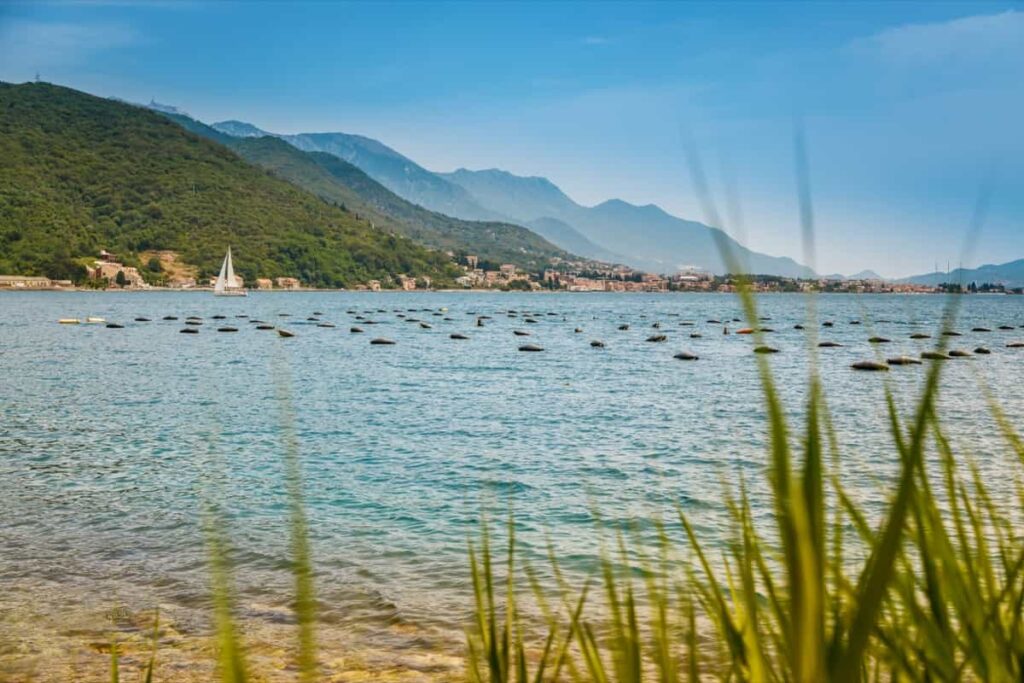
Intriguingly, these mussels initially vexed oyster cultivators before 1950 due to their competitive interference with oysters for sustenance and space. However, they have become extensively cultured and sought after as a culinary delicacy due to their profound nutritional composition, boasting significant quantities of protein, fat, carbohydrates, vitamins, and minerals.
Green Mussel Farming Techniques in the Philippines
The Green Mussel (Perna viridis) holds a significant place in the Philippines, known as “tahong” in Tagalog and recognized as the “green shell” in Visayas and Mindanao. This bivalve, belonging to the Mytilidae family, is a valuable food source and plays a complex role in aquatic ecosystems. The shell’s striking dark green hue, fading towards the point of attachment, and its distinctive downward-pointing beak characterize this mussel.
Growing up to 165 millimeters, it boasts a prominent mobile foot for vertical mobility through sediments and produces byssus threads to secure itself. Perna viridis is native to the Asia-Pacific region but has traversed oceans, finding a niche in the Caribbean and the waters surrounding Japan, North America, and South America. However, its economic importance comes with caveats; the mussel can carry toxins and induce structural damage to submerged infrastructure.
In aquaculture, green mussel farming mirrors oyster cultivation, often coexisting due to shared habitat requirements. The Bureau of Fisheries and Aquatic Resources (BFAR) has offered comprehensive guidance on green mussel farming, though novel techniques have also emerged. Establishing a green mussel farm necessitates a startup investment of around P60,000, primarily allocated to bamboo, nets, and labor, as building during low tide mandates multiple hands.
For an optimal environment, water depth should range from 5 to 8 feet during high tide and at least 1 foot during low tide. The seed mussels, essential for cultivation, can be sourced from fellow farmers or fishermen who consider them pests. Alternatively, mature mussels can be purchased from existing farm owners for subsequent reproduction.
Economic Benefits of Green Mussel Farming in the Philippines
- Revenue Generation: Green mussel cultivation generates substantial income for local communities and farmers, enhancing their livelihoods and economic well-being.
- Employment Opportunities: The industry employs marginalized fisherfolk, promoting inclusive growth and poverty reduction by creating jobs in coastal areas.
- Export Potential: High-quality green mussels find markets beyond domestic consumption, contributing to export revenues and bolstering the Philippines’ trade balance.
- Supply Chain Development: The sector stimulates the growth of related industries, such as aquaculture equipment suppliers, transportation, and seafood processing, fostering economic diversification.
- Food Security: Green mussels contribute to food security by offering a protein-rich source for local consumption, reducing dependence on imports, and stabilizing prices.
- Rural Development: Farming activities drive development in rural coastal areas, improving infrastructure, services, and overall community well-being.
- Foreign Exchange Earnings: As an export commodity, green mussels contribute to foreign exchange, strengthening the national economy and supporting currency stability.
In case you missed it: Tilapia Farming in the Philippines: A Comprehensive Guide
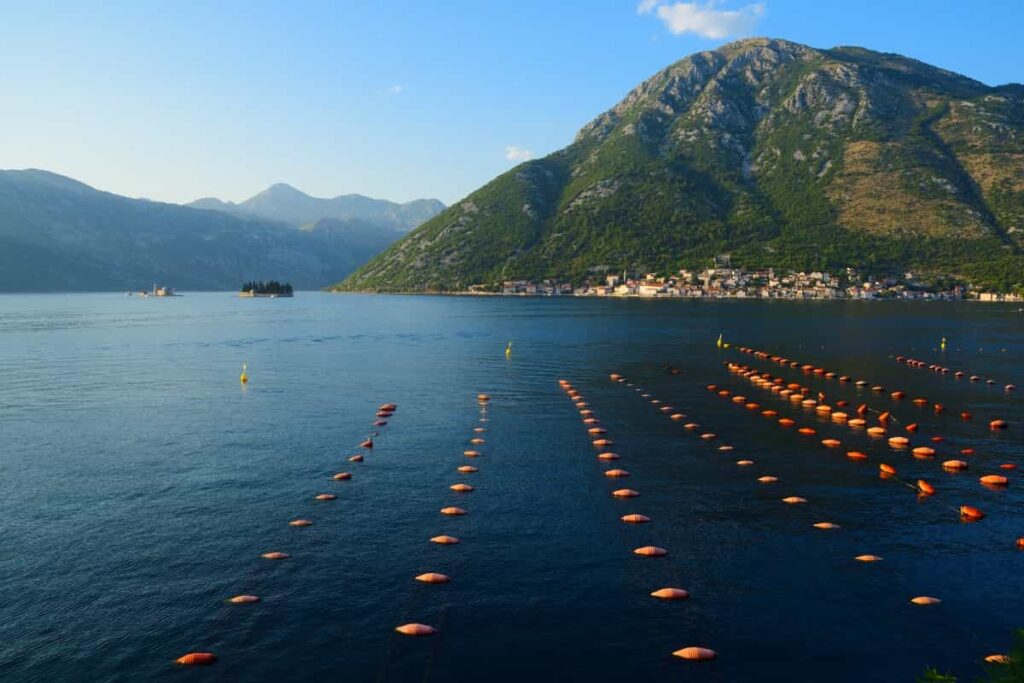
Best Locations for Green Mussel Farming in the Philippines
The Philippines offers several optimal locations for green mussel farming due to its extensive coastline and rich aquatic resources. Regions with sheltered bays, coves, and estuarine mangrove areas, such as Bacoor Bay in Manila Bay, Sapian Bay in Capiz, and Panay Island’s Maqueda Bay, are conducive to mussel cultivation. The coasts of Ilocos Norte in northern Luzon to Panguil Bay in Mindanao provide diverse habitats for this species. Proximity to nutrient-rich currents and suitable water temperature contribute to successful cultivation.
Green Mussel Seed Production Methods in the Philippines
The SEAFDEC AQD initiated a spatial forecasting program for oysters and mussels in specific regions of the Philippines. Starting in 1979 at the Himamaylan River in Negros Occidental for oysters and in 1981 in Batan Bay, Aklan, for mussels, the program involved two main activities. First, it included the daily monitoring of oyster or mussel larvae in the plankton.
Second, it involved tracking the actual settlement of larvae on standardized collectors installed in farm sites. A series of collectors were strategically positioned for oysters, and five collectors with rope frames were employed for mussels. These methodologies aimed to predict spatially and optimize collection strategies.
- The sustained presence of over five mature larvae/100 samples for at least three days indicated imminent spatial. The period of spat fall could extend up to a month, prompting a staggered collection approach.
- A substantial set should yield at least 15 spat per shell in a 40 m² area for commercial oyster seed production. For mussel seed, a count of 200-500 spat/m of rope or 70-85 spat/30 cm of collector rope signifies successful settlement for commercial purposes.
In bivalve mollusk farming, the Philippines has developed its culture systems reliant on natural seed stock. Seed collection methods include natural and synthetic ropes, with both materials having pros and cons. Bamboo stakes are widely used to enhance the siltation rate in stake-farm areas, serving as a clutch for settling mussel larvae. An alternative is floating raft culture, which offers advantages such as faster growth, regular thinning, and mobility to prevent siltation.
Market Demand for Green Mussels in the Philippines
The market demand for green mussels in the Philippines is robust due to their popularity as a nutritious and affordable seafood option. With a rich flavor profile and high nutritional content, green mussels are sought for their protein, vitamins, and minerals. They are a staple in local cuisine, contributing to consistent consumer demand.
Additionally, the affordability of green mussels makes them accessible to a wide range of consumers. The thriving demand for this seafood underscores its integral role in the Filipino diet and the culinary industry, reinforcing its significance in the country’s food culture and economy.
Environmental Impact of Green Mussel Farming in the Philippines
Green mussel farming in the Philippines has introduced depuration methods to ensure the safety of harvested bivalves for consumption. Oysters and mussels, known to harbor high bacterial concentrations, are purified in unpolluted water. This process involves filtering water through the bivalves, causing bacteria in the guts and gill regions to be expelled as feces and pseudofeces.
In case you missed it: 15 Types of Black Chicken Breeds with Pictures: The Ultimate List for Your Backyard
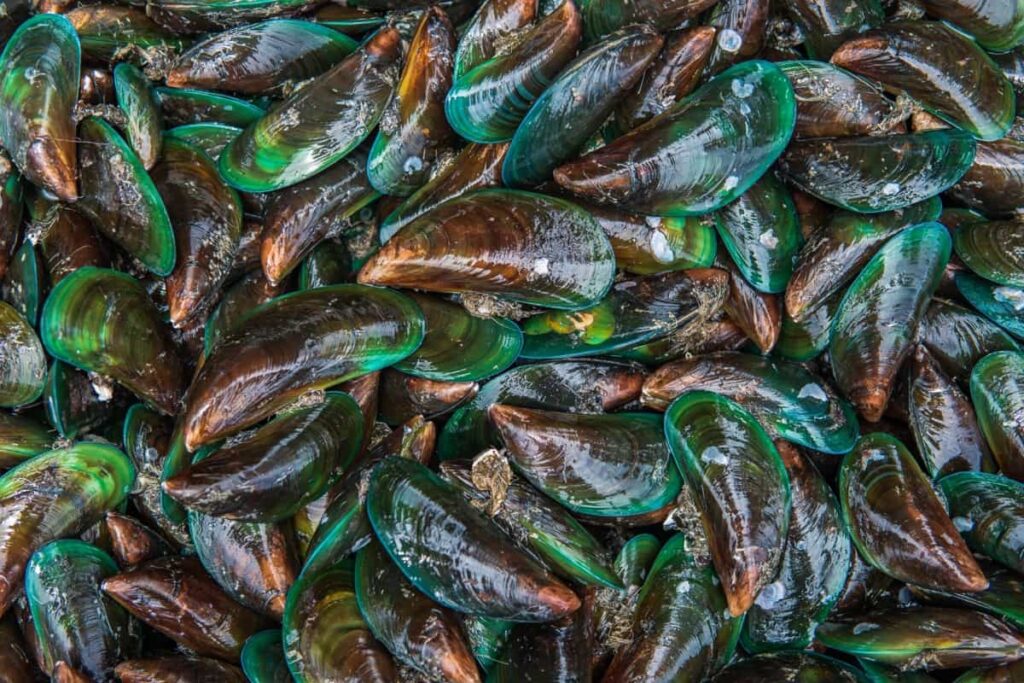
A low-cost depuration unit prototype was established in 1983, demonstrating the efficiency of ultraviolet (UV) radiation in bacterial disinfection, making it suitable for local conditions. However, concerns about heavy metal accumulation in bivalves arose, with studies indicating that green mussels accumulate mercury from their surroundings. Red tide incidents also impacted the industry, with toxicities in contaminated green mussels exceeding regulatory thresholds.
Green Mussel Feed and Nutrition Requirements in Philippine Farms
Green mussels are filter feeders, extracting nutrients from surrounding water. They primarily consume phytoplankton and other microorganisms, making water quality crucial. Adequate nutrition ensures robust growth and quality yields. Monitoring water parameters like temperature, salinity, and nutrient levels is imperative.
Maintaining suitable water conditions enhances the availability of essential nutrients. As green mussels mature, their nutritional needs evolve, necessitating a balanced diet to support reproductive processes. In-depth knowledge of local aquatic ecosystems aids in formulating appropriate feeding strategies.
Harvesting and Processing Techniques for Green Mussels in the Philippines
Harvesting green mussels in the Philippines follows a strategic approach. Harvest cycles occur every 4 to 6 months. During these cycles, select mature mussels that meet market size standards, leaving smaller ones to grow for future harvests. Natural maturation and reproduction negate the need for continual seed purchases.
As harvesting commences, it persists until farm structure integrity is compromised, underscoring the importance of regular maintenance. Bamboo-based farms typically endure for two years with minor upkeep but can extend up to 10 years with consistent replacement of deteriorated sections.
Investment Opportunities in the Green Mussel Farming Industry in the Philippines
- Steady Growth and Reproduction: Initial harvests are modest, yet subsequent ones experience notable growth due to shell reproduction. Expect a modest harvest in the first year, then significant improvements in the following years.
- Profit Projection: A P60,000 investment can yield promising returns. In the first year, a net income of P50,000 is achievable. The subsequent year could increase to P80,000 from the same farm, considering an average farmgate price of P90/kg.
- Market Price Dynamics: Market prices have an impact on profit potential. Higher prices can translate to more substantial earnings beyond P80,000 in regions like Luzon.
- Continuous Expansion: Many farmers opt for expansion, gradually enhancing their structures to accommodate more mussels. This strategy fosters increased production and revenue over time.
- Premium Selling Channels: Directly selling at public markets presents an opportunity to secure premium prices. Prices of up to P150/kg can be realized, providing an avenue for enhanced profitability.
- Geographical Variation: Profitability can vary based on location. Local demand, regional economic factors, and market access can impact potential earnings.
- Market Demand: Green mussels are significant in local cuisine, contributing to consistent demand. This sustained interest in mussels offers a stable market landscape.
- Long-Term Viability: Green mussel farming aligns with sustainable aquaculture practices. As eco-friendly food production gains importance, the industry’s long-term viability becomes more apparent.
- Economic Impact: Green mussel farming contributes to rural livelihoods, bolstering local economies and supporting marginalized fisherfolk.
In case you missed it: Mud Crab Farming in the Philippines: Evergreen Profitable Business
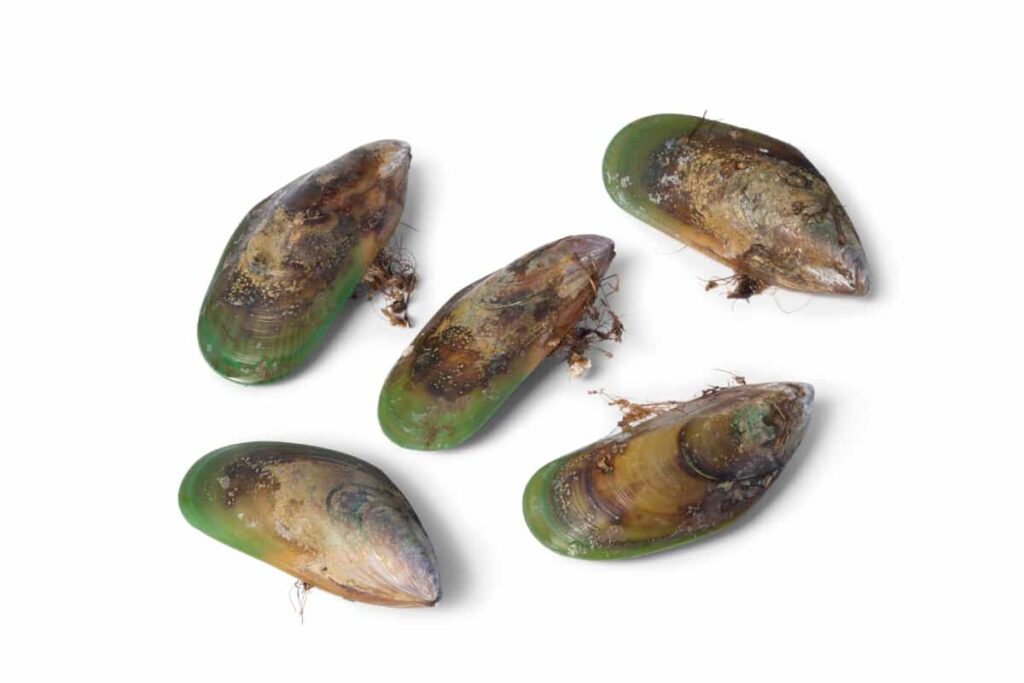
Research and Development Initiatives for Improving Green Mussel Farming in the Philippines
Resource Richness and Importance: The Philippines, blessed with vast coastlines and abundant coastal waters, considers mollusks a vital resource. Mussels and oysters, collectively valued at PhP1.552 billion in 2020, hold immense economic significance.
Food Security and Livelihood: These mollusks are lifelines for marginalized fisherfolk, ensuring sustenance and livelihood. They are crucial in bolstering food security, enhancing nutrition, and alleviating poverty among these communities.
Historical Scale of Mollusc Culture: Traditional mollusk culture has been small-scale for almost a century, emphasizing non-fed species like mussels and oysters. Despite their economic importance, larger commercial-scale ventures have been limited due to various constraints.
Challenges in Sustainable Production: Dependency on wild seed stocks hampers sustainable production. The absence of commercial-scale hatcheries and the insufficient capacity of existing ones pose challenges, causing production to be unreliable.
Technological Availability and Constraints: While certain aspects of mollusk culture technologies are accessible, capital limitations and inadequate government support hinder artisanal fishers from expanding into large commercial-scale ventures.
Research Gaps and Priorities: Addressing research gaps is paramount. Future endeavors should focus on refining existing technologies and introducing innovative ones. Critical areas include the economics of diverse culture techniques, comprehensive post-harvest technologies, and genetic information scarcity for leading mollusk species.
Genetic Information and Hatchery Capacity: A pressing concern is the scarcity of genetic information for these species. The absence of this knowledge restricts breeding advancements. Resolving this issue requires dedicated research efforts and investments in hatchery capacity.
Advancing Culture Techniques: Research must target developing efficient culture techniques at various phases, including broodstock management, seed production, and post-harvest handling. These improvements will enhance overall productivity.
Economic Viability Studies: Comprehensive assessments of the economic viability of different cultural techniques and stages are essential. Such analyses aid decision-making and encourage investors to engage in sustainable commercial farming.
Holistic Approach: To elevate green mussel farming, a holistic approach blending scientific advancements, stakeholder collaboration, and governmental support is indispensable. Bridging the gap between traditional practices and modern innovations will pave the way for a thriving and sustainable industry.
Comparison of Green Mussel Farming with Other Aquaculture Practices in the Philippines
Green mussel farming in the Philippines typically yields faster growth, with harvesting usually commencing within 4 to 6 months. These mussels are both farm-raised and harvested from the wild. Unlike freshwater mussels, green mussels require saltwater habitats for survival. The propagation of green mussels, known as “Tahong” in the Philippines, occurs naturally in their habitat with proper farming practices.
In case you missed it: Mudfish Farming in the Philippines: How to Raise and Grow Dalag
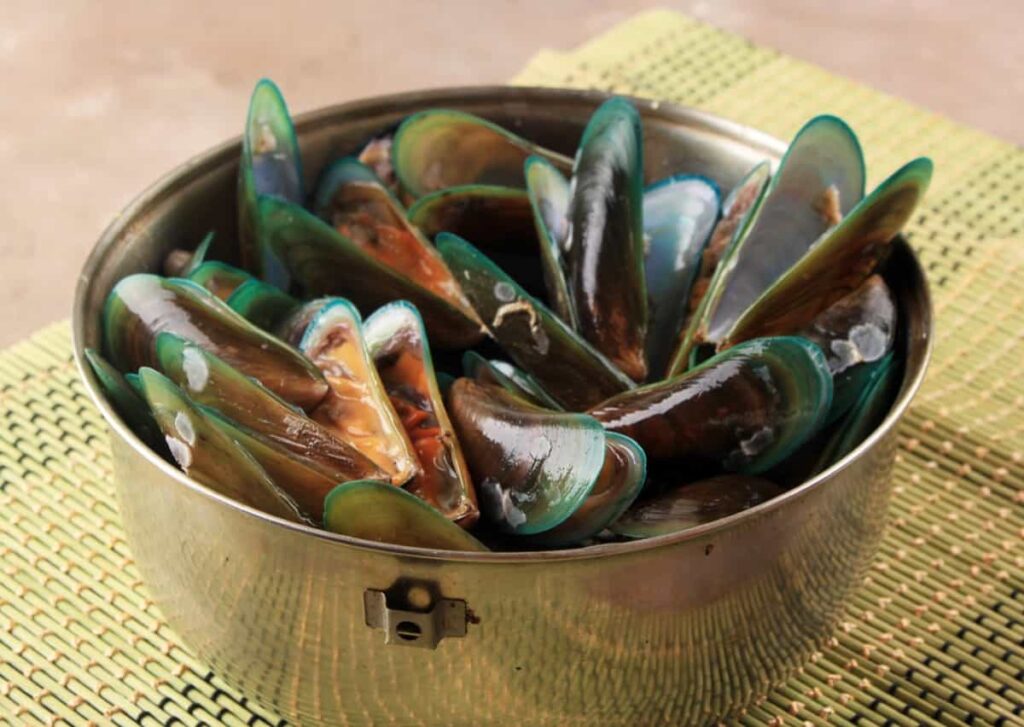
In this context, mussel farming involves collecting baby mussel seeds on ropes placed near the shore. The collected seed is enclosed in a sock attached to a rope and then suspended in the water using buoys. The mussels grow in the ocean for around four months. Prime locations for green mussel cultivation in the Philippines include Manila Bay, Bacoor Bay (Cavite), Sapian Bay (Capiz), and Maqueda Bay (Samar).
The country’s mussel production has grown substantially, with the highest annual yield recorded in 1985. The local approach to mussel farming involves hanging, where artificial collectors are placed on poles or structures over or near natural spawning grounds. Mussel shell waste doesn’t have to be discarded; it can be repurposed. Due to their calcium content, mussel shells are valuable for animal feeds, especially for chicken layers.
Conclusion
Green mussel farming in the Philippines presents a lucrative opportunity. It offers a sustainable seafood source with faster growth rates and natural propagation. Meticulous practices ensure product safety. As commercial-scale cultivation expands in strategic locations, this industry holds promise for economic growth and environmental stability.
- Sheep Farming Business Plan for Beginners
- Aquaponic Farming at Home: A Step-By-Step Guide
- Profitable Village Farming Business Ideas in 2024
- High-Yield Aquaculture: Fast-Growing Fish for Farming
- Effective Fish Pond Construction Techniques for Beginners
- Irrigation and Water Management in Pineapple Farming
- Blossom to Harvest: Mastering Flowering and Pollination in Papaya Farming
- Pig Fattening Essentials: From Selection to Sale for Beginners
- Raising Wagyu Cattle: A Complete Guide for Premium Beef Production
- Soil Types and Their Water Holding Capacity
- Optimizing Irrigation Schedules for Coconut Groves for Enhanced Yield
- Espresso Your Garden: Coffee Grounds for Healthier Acid-Loving Plants
- The Best Soil Mix for Snake Plants: How to Mix Your Own Snake Plant Soil
- Green Thumb Success: Expert Tips for Cultivating Greenhouse Beans All Year Round
- Bloom All Year Round: The Ultimate Guide to Indoor Hyacinth Care
- Eco-Friendly Gardening: How to Make Liquid Fertilizer from Kitchen Waste
- Ultimate Guide to Grow Anise in Pots: Explore Seed Propagation to Harvesting
- Guide to Raising Chester White Pigs: Discover Breed Facts to Growth Management
- Mastering the Elegance: The Ultimate Guide to Weeping Cherry Tree Care, Planting, and Maintenance
- Ultimate Guide to Planting Garlic in Grow Bags: Growing Strategies for Beginners
- How to Fix Spider Plant Leaf-Related Problems: Natural and Organic Remedies
- 10 Reasons Why Your Tulsi Plant is Shedding Leaves: Home Remedies and Solutions
- Optimizing Growth and Yield: The Advantages of Palm Bunch Ash Fertilizer
- Utilizing Neem Oil Extract as a Natural Pesticide for Hydrangea
- From Soil to Harvest: Various Ways in Which Farmers Can Use AI Tools
- Steps to Encourage and Induce Citrus Flowers: A Comprehensive Guide
- How to Fix Snake Plant Leaf-Related Issues: Natural and Organic Remedies
- Transform Your Garden into a Fragrant Oasis with Raat Ki Rani (Night Blooming Jasmine)
- Discover the Ideal Chicken Breeds for Philippine Farms
- How to Create a Poultry Egg Farm Business Plan for Profits
- Grow Lemon Cucumbers Like a Pro: Insider Techniques for Bountiful Yields
- Ultimate Guide to Caring for Your Pink Princess Philodendron: Tips for Thriving Variegation
- Areca Nut Profit Per Acre: Calculating Yield and Cost of Cultivation
- How Kaveri Chicken is Becoming a More Profitable Breed in Indian Backyards
- Transform Your Barn: 9 Steps to Convert a Horse Stall into a Chicken Coop
- Exploring Suffolk Sheep Disadvantages with Limitations and Challenges
